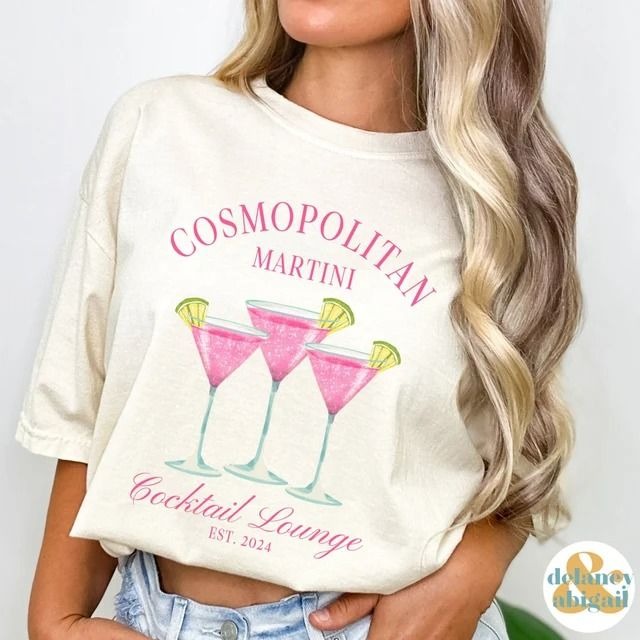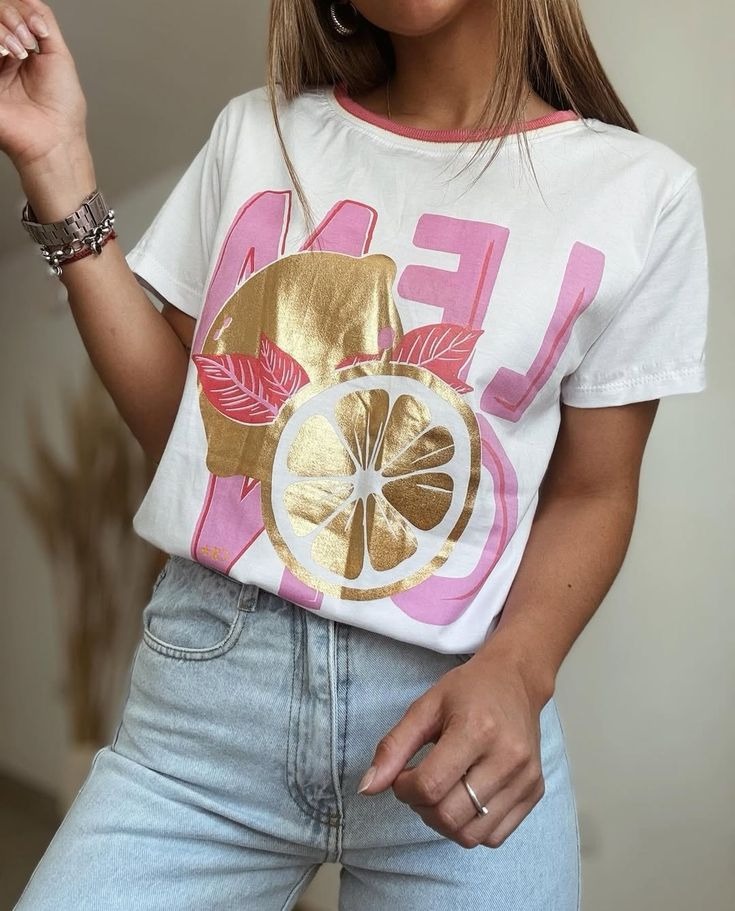The Unassuming Beginning and the Rise to Prominence
The journey of the T shirt begins in humble contexts where comfort and utility reigned supreme. A simple cotton garment worn beneath heavier layers to manage heat and moisture slowly emerged from obscurity into broad daylight. Early adopters were often laborers and service personnel who, in sweltering conditions or demanding tasks, sought relief from rigid uniforms. In regions with hot climates, the lightweight nature of this shirt offered immediate comfort. Over time informal acceptance grew as images of workers or sailors wearing plain cotton shirts appeared in photographs and anecdotes. These glimpses suggested a garment that could transcend its intended purpose. Shifting social norms around propriety and attire loosened strict dress codes. As daily life grew less formal in many societies, what had once been a private underlayer quietly advanced toward becoming acceptable as visible attire.
The Influence of Visual Media in Changing Perceptions
Cinema photography and printed imagery played a vital role in recasting the T shirt as a symbol of authenticity and relaxed style. Early cinematic scenes featuring characters in simple shirts without adornment evoked a sense of unvarnished realism. Actors conveying rebellion or vulnerability by stepping into scenes dressed plainly resonated with audiences seeking more natural expressions of self. Photographs of athletes models or everyday figures clad in basic shirts further normalized the idea of visible undergarments serving as exterior dress. Advertisements gradually depicted shirts alone paired with jeans or skirts conveying a new freedom from tradition. As mass media spread these images, the T shirt moved from hidden layer to emblem of casual confidence. Its transformation reflected larger cultural shifts toward informality and individual expression. The simplicity of the garment became its statement.
The Evolution of Graphic Expression and Wearable Storytelling
With advances in printing techniques the T shirt’s blank surface evolved into a canvas for narrative and identity. Screen printing methods matured allowing vivid imagery and text to adorn cotton fabric. Musicians harnessed this medium to commemorate tours and albums enabling fans to bear visual mementos. Activists discovered that slogans printed across a shirt could travel through crowds amplifying causes. Independent artists collaborated with small studios or used digital transfer tools to share designs broadly. Each shirt became a mobile story carrying personal tales or shared affiliations. The act of wearing a shirt with a cherished image or slogan wove the wearer into a larger narrative tapestry. As graphic innovation flourished, debates around ownership and fair use surfaced. Designs referencing cultural icons spurred conversation about permission and compensation. Fan created shirts sometimes circulated informally challenging official channels. This interplay between creativity commerce and ethics underscored the complexities of turning a simple garment into a vessel of meaning.
Global Production and Local Reinvention
As manufacturing networks spanned continents the T shirt emerged as one of the most traded apparel items in the world. Factories in diverse regions produced vast quantities at varying price points and quality levels. Despite a broadly similar form the cultural significance shifted with local interpretation. In some societies shirts printed with political imagery fostered solidarity within movements referencing familiar symbols and language. In other locales artisans applied traditional dyeing embroidery or printing techniques to shirt forms blending heritage craft with contemporary wear. Tourism fueled diffusion as visitors acquired shirts bearing landmarks or idiomatic phrases serving as souvenirs and conversation starters. Secondhand markets further circulated garments across borders introducing influences that shaped local tastes and sparked new design ideas. This interplay of global uniformity and regional nuance highlights the T shirt’s dual nature as universal staple and cultural chameleon.
Supply Chain Complexities and Material Sourcing
Beneath the apparent simplicity of a shirt lies a network of cultivation manufacturing and logistics that spans the globe. Cotton cultivation demands careful consideration of land use water resources labor conditions and market fluctuations. Alternative fibers such as organic cotton recycled materials or plant derived fabrics entered production as environmental and ethical concerns grew, though these options can involve higher costs or specific processing challenges. After fiber harvesting the journey continues through spinning knitting dyeing and finishing stages each with potential for innovation or risk of pollution if wastewater is not managed responsibly. Transportation links remote farms to factories to distribution centers and eventually to retailers or direct consumer deliveries. This multilayered chain often crosses jurisdictions with different regulatory frameworks and enforcement realities. Efforts toward transparency and traceability strive to illuminate each step yet challenges persist as subcontracting and informal production obscure oversight. Understanding the full passage of a single shirt from seed to garment encourages greater awareness of hidden impacts and shared responsibility among stakeholders.
Economic Dynamics and Shifting Market Trends
The T shirt industry navigates a terrain where mass consumer demand intersects niche creativity and luxury innovation. Rapid production facilities supply low cost basics fueling a culture of frequent replacement while independent designers leverage direct channels to offer unique story rich garments. Luxury houses reinterpret the basic form using premium materials or artisanal methods positioning shirts as collectible pieces. E commerce platforms and print on demand services reduce inventory risk enabling small ventures to compete globally. Crowdfunding campaigns support custom lines reflecting personal or community driven themes. Social media amplification can spark sudden interest leading to viral demand patterns. These forces create opportunity for diverse creators yet also introduce volatility and competition. Brands must balance speed creativity and sustainability. Consumers weigh personal values budgets and environmental awareness when choosing between mass produced staples and limited artisanal runs. The evolving landscape reflects tensions between abundance and scarcity novelty and lasting value mass production and mindful creation.
Environmental Imperatives and the Path to Regenerative Practices
Given its ubiquity the environmental footprint of T shirt production occupies a central place in broader discussions on sustainable fashion. Traditional cotton farming can be water intensive and rely on chemical inputs. Dyeing and finishing processes may release pollutants when wastewater treatment is inadequate. Overproduction and a throwaway culture result in textile waste burdening landfills and ecosystems. In response movements advocating slower fashion and circular economy models call for durable design repair up cycling and recycling initiatives. Brands experiment with ecofriendly fibers transparent sourcing and fair labor commitments while consumers educate themselves on care practices to extend life of garments. Collaborative initiatives involve collection programs that gather used shirts for fiber recovery or repurposing. Biodegradable materials and closed loop processing technologies show promise though they demand infrastructure investment. Designers exploring modular garment concepts enable easier disassembly and reuse of components. Achieving meaningful regenerative systems requires collaboration among industry players policymakers and consumers willing to embrace longevity over disposability.
Technological Advances in Fabric and Garment Experience
Innovations in textile science continually expand the capabilities of the T shirt. Performance oriented fabrics offer moisture management antimicrobial properties and protection against ultraviolet radiation appealing to active lifestyles and specialized contexts. Blends combining natural and synthetic fibers aim to balance comfort durability and functional benefits. Emerging explorations in adaptive fabrics envisage garments that adjust insulation levels in response to temperature changes or incorporate microcapsules releasing skincare ingredients or fragrances over time. Preliminary work on conductive threads and washable sensors points toward integration of wearable technology enabling health monitoring or interactive experiences. Design processes also evolve with digital pattern making and three dimensional body scanning facilitating personalized fit reducing returns and waste. Direct to garment printing and virtual sampling speed creation of intricate visuals without extensive physical prototypes. Augmented reality tools allow consumers to preview how a shirt appears on their body enhancing confidence in online purchases. As these technologies converge the T shirt serves as a fertile ground for experimentation blending tradition and innovation.
Personalization Trends and Community Collaboration
A defining characteristic of T shirt culture lies in personalization and participatory creation. Online platforms enable individuals to upload artwork or text crafting unique shirts tied to personal milestones events or creative impulses. Local print shops provide swift service for small runs supporting gatherings fundraising or promotional needs. Artisans apply hand methods such as tie dying embroidery block printing or appliqué transforming mass produced bases into one of a kind pieces reflecting personal style and heritage craft. Community initiatives invite contributions through crowd sourced design contests or charitable projects producing shirts that raise awareness or funds. These practices foster connections between creators consumers and causes, yet also prompt reflection on intellectual property rights compensation for contributors and the environmental footprint of limited productions. Thoughtful engagement in personalization deepens sense of ownership belonging and cultural resonance beyond the garment itself.
The Activist Shirt as Symbol and Catalyst
Throughout eras of social change the shirt has functioned as visible badge of solidarity and protest. Demonstrators don garments bearing slogans images or icons encapsulating shared demands turning bodies into walking statements. Distribution at rallies or via online campaigns amplifies reach and solidarity among supporters. Sales of activist shirts generate funds for causes, though critiques of superficial engagement arise when purchase substitutes deeper involvement. These tensions illuminate the need for authenticity in activism and mindful consumption of cause related apparel. Wearing a shirt bearing a message can spark dialogue yet must align with sustained action to avoid mere symbolic gesture. The shirt remains a potent tool for communication and cohesion, but its power grows when tied to genuine commitment and collective effort.
Role in Subcultures and the Dynamics of Street Culture
Within various communities the shirt often serves as identifier signaling membership and shared values. Music scenes skate culture gaming and urban styles adopt specific graphics logos or insider references that resonate within groups. Street culture elevates basic shirts through limited collaborations hype driven releases and secondary market trading turning a simple garment into a sought after object. Scarcity combined with cultural significance fuels desire even as access and price barriers create tension. These dynamics reveal how a garment negotiates between democratic accessibility and exclusivity shaped by marketing strategies and community perception. Beyond ephemeral hype certain subcultures maintain do it yourself ethos crafting own graphics customizing shirts reflecting autonomy creative expression and resistance to mainstream trends. The shirt’s adaptability underpins its enduring role in subcultural identity formation.
High Fashion Reinterpretation and Collaborative Ventures
Prestige designers periodically revisit the simple shirt injecting luxury craftsmanship or conceptual ideas. Embroidery embellishments unusual cuts or choice of rare fibers recast the basic form as collectible fashion piece. Collaborations between high end fashion houses and street brands blur traditional hierarchies generating garments that attract attention and spark debate. Such initiatives highlight the shirt’s central cultural role yet raise questions about accessibility and environmental impact when simple forms are transformed into limited editions with high price tags. The dialogue between mass produced basics and luxury reinterpretation underscores tensions around democratization exclusivity creativity and commercial imperatives within fashion discourse.
Psychological Resonance and Emotional Attachment
Many individuals develop deep attachment to particular shirts tied to memories of events trips relationships or personal achievements. A worn garment may evolve into a daily uniform offering comfort reassurance and a sense of identity expression. Studies in psychology note that clothing influences mood self perception and social interaction. The shirt’s blank canvas allows wearer to project facets of personality through graphic choices or color while preserving ease and familiarity. Gifted shirts carry emotional weight linking giver and recipient through shared experiences. Over time fading fabric and softened texture become part of the shirt’s story embedding personal history. Caring for and repairing beloved garments strengthens bonds between wearer and object showing how material culture intertwines with memory and emotion.
Guidance on Care Repair and Extending Lifespan
Mindful laundering practices help preserve shirt integrity. Washing inside out using gentle detergents avoiding excessive heat in drying and air drying flat mitigates shrinkage and fading. At the first sign of wear small repairs such as patching holes reinforcing seams or creatively reprinting faded areas restore function and character. Repair workshops and online tutorials foster skills that counter disposable culture. Sharing mending practices in communities builds connections and intergenerational exchange of techniques. Passing down cherished shirts through repair circles nurtures appreciation for craftsmanship and continuity. Embracing these practices aligns with environmental objectives and deepens personal relationship to clothing resisting impulse of replacement.
Labor Conditions and Ethical Production Considerations
The journey of many shirts involves labor conditions that vary widely across regions. Some factories maintain safe workplaces fair wages and avenues for worker voice while others remain opaque with risks of exploitation or unsafe environments. Advocacy for transparency supply chain audits and certification schemes advances worker wellbeing yet enforcement can be hampered by subcontracting and informal production. Consumers express desire for ethically produced garments but verifying claims often proves challenging. Collaborative efforts among brands NGOs and policymakers aim to establish standards and mechanisms ensuring fair conditions. Educating consumers about production complexities fosters empathy and informed purchasing choices that support initiatives uplifting communities behind the garments.
Digital Transformation of Creation and Consumption
Digital tools transform how shirts are designed produced and distributed. Designers employ online platforms to sketch prototypes gather feedback and refine ideas quickly. E commerce channels grant global reach to creators large and small while social media shapes trends fueling demand for specific graphics or styles. Influencers model shirts inspiring followers to seek similar items. Data analytics guide brands in predicting preferences managing inventory and tailoring offerings but reliance on constant novelty can exacerbate overproduction. Virtual try on applications address fit concerns yet may encourage impulsive buying. Balancing digital efficiency with mindful design and consumption practices remains vital to harmonize technology with sustainability and genuine human connection.
Educational Institutional and Community Applications
Beyond fashion the shirt serves functional and symbolic roles in educational settings events and organizations. Schools issue shirts to foster unity commemorate milestones or teach design principles. Non profit groups distribute shirts to volunteers or donors increasing visibility and support for causes. Corporations use branded shirts in team building or promotional contexts. Specialized shirts assist in therapeutic or identification functions in healthcare or research. These varied applications illustrate the shirt’s adaptability as a comfortable garment and a medium for communication and cohesion across diverse scenarios.
Artisanal Practices and Preservation of Heritage
While large scale production meets mass demand pockets of artisans sustain traditional methods applied to shirt forms. Hand dyeing embroidery block printing or applique techniques transform basic shirts into wearable art reflecting cultural heritage. Artisans preserve local knowledge and support livelihoods through small batch creations that appeal to consumers seeking authenticity. Digital platforms connect these makers with global audiences while preserving narratives behind each piece. Scaling artisanal efforts without compromising integrity poses challenges yet collaborative networks and consumer interest in craft can nurture growth of sustainable local economies rooted in culture specific aesthetics and values.
Emerging Frontiers in Wearable Technology and Smart Fabrics
Research in smart textiles hints at integration of sensors circuits and connectivity within everyday shirts. Early prototypes demonstrate potential to monitor health metrics adjust thermal properties or interface with devices opening paths in wellness sports and interactive entertainment. Challenges include ensuring washability comfort durability and maintaining affordability for widespread adoption. The familiar form of a shirt may ease integration of subtle technology features in daily life. Future iterations could blend comfort and function offering new forms of interaction between wearer and environment. Ethical considerations around data privacy equitable access and environmental impact must guide development of these innovations to ensure they serve collective wellbeing.
Toward Circular Systems and Regenerative Models
Imagining a circular future places the shirt at center of reuse recycling and regenerative efforts. Collection systems retrieving worn shirts for fiber recovery or remanufacturing aim to reduce reliance on virgin resources. Biodegradable or compostable materials and closed loop processing show promise but require investment in infrastructure and collaborative frameworks. Designers adopting modular concepts enable easier disassembly and repurposing of components. Partnerships among brands recyclers and policymakers work to implement take back programs and material recovery facilities. Consumer education on repair resale donation and recycling practices completes the ecosystem fostering responsible lifecycle management. Achieving genuine circularity demands collective commitment reshaping production consumption and waste management.
Reflections on Responsibility and Collective Impact
The story of the shirt intertwines individual choices and systemic forces. Each purchase decision influences demand patterns affecting environmental and social outcomes. Collective action through advocacy support for transparent supply chains and investment in circular infrastructure can steer industry toward ethical resilience. Creativity in design and community engagement fosters deeper attachment to garments encouraging care and longevity. Recognizing the shirt’s dual nature as everyday comfort item and symbol of complex networks invites holistic perspective valuing personal expression alongside mindful stewardship of resources and people. Embracing this view encourages stakeholders to participate in shaping a future where simple garments contribute to positive change.
Imagining Future Chapters and Lasting Resonance
Looking ahead the shirt will continue adapting within evolving cultural technological and environmental landscapes. Material innovations may yield fabrics that heal adapt or interact with surroundings. Digital immersive experiences might allow dynamic customization blending physical and virtual expression. Community driven models could pioneer shared repair cooperatives regional craft revivals or peer to peer garment exchange networks. Amid these possibilities the core appeal of the shirt persists: comfort neutrality and capacity to carry messages personal and collective. The ongoing challenge lies in harnessing innovation responsibly ensuring that the shirt remains more than mass produced commodity but also vessel for creativity connection and conscientious progress.
Closing Reflections
From obscured underlayer to global cultural icon the shirt’s odyssey reveals layers of meaning woven into a deceptively simple form. Its evolution mirrors shifts in social norms artistic practice technology markets and environmental awareness. As this expansive exploration shows the shirt functions as canvas for expression tool for solidarity industrial staple and memory keeper. Embracing its richness invites designers producers consumers and communities to engage thoughtfully in creation consumption and stewardship. In doing so the shirt can continue to embody comfort expression and innovation inspiring meaningful connections and ethical progress across generations.




